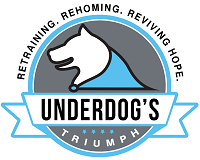We all have that thing we never want to do. Getting up for the gym, eating all our vegetables, getting up early for work. You name it. Our dogs are the same way. Nail trims, the dreaded bathtub or a trip for the vet. The only difference between these two things is that we know doing those unpleasant things because we know deep, deep, deep down those unpleasant things won’t last forever and they’re (probably… maybe…) good for us in the long run. You’re dog doesn’t know that. To him or her, the vet trip is forever and it’s the worst thing.
How can we make this unpleasant things more pleasant for our furry friends?
First things first, we need to recognize that everyone, including us, has a limit. In dog training we call this a threshold. It’s a point at which you exceed the dog’s ability to handle the situation and they have a reaction to it. Most often this reaction is one of fear – showing signs of stress, yawning, shaking, or what is often mistaken as “aggression” by barking, lunging, growling or snapping. If you dog is showing any of these signs you’ve gone too far. When a dog is “above threshold” the dog’s mind is in a state of fear and thus we, as trainers, cannot change the dogs reaction to this “unpleasant” thing.
In order to change the dog’s frame of mind, we need to work with the dog when he or she is “below threshold.” This process takes time and patience because we are actually changing the emotional response of the dog. Think of it in humans terms, let’s say you have a phobia of the dark. If I toss you in a room, turn off the lights and then hand you your favorite food of all time. Are you cured? Probably not. I bet you don’t even notice I brought food. You’re too busy trying to claw your way across the room to find the light switch, right? Dogs react the same way. You’ll see ones 100% food motivated dogs, completely ignore hotdogs dropped or even held right in front of their face.
Instead we’ve got to work up gradually to this scenario. Let’s say instead of turning off all the lights, we just dim them to 90% and eat your favorite food. We’ll do this for a while, then turn them back up, then back down, then up, then down, gradually getting closer to that desired darkness. And eventually, we’ll have you eating in the dark with the same reaction as if you were eating in the light. That takes time, but in the end your brain no longer experiences fear when the lights go off, instead you feel happy and excited in anticipation of your favorite food.
In dog world, I’ve been working on this with Luna. Luna, my own dog, has a phobia of people. When I first adopted her, a year ago, she would enter into panic mode (being over threshold) when she was 50 feet away. She’d freeze up, refuse to move or try and back out of her harness. We can’t teach like that, so we worked at 60 feet before she’d get into panic mode. Or we’d “stalk” a person and walk behind them which is less scary then approaching them head on.
It’s important to adapt, be flexible and above all be patient. Change emotions is hard work for both you and the dog. Pairing something awesome/pleasant with some that is mildly unpleasant (like a person from 60 feet away or a 90% dim room), works to change the reaction that that “unpleasant” thing. And it doesn’t always have to be food either. Sometimes, we get too focused on treating or praising we forget other rewards exist too. For Luna, if we approached someone head on for a few feet, her reward was to move away from that person. Sure I looked like a crazy person walking into the yard or crossing the street, but hey it worked for her. The relief she felt after having been “brave” and walking towards her fear was the reward to her.
If anyone has any ideas, topics or questions as they relate to dog behavior or training, please send us an email at contact@underdogstriumph.org and yours may be featured in our next blog!
